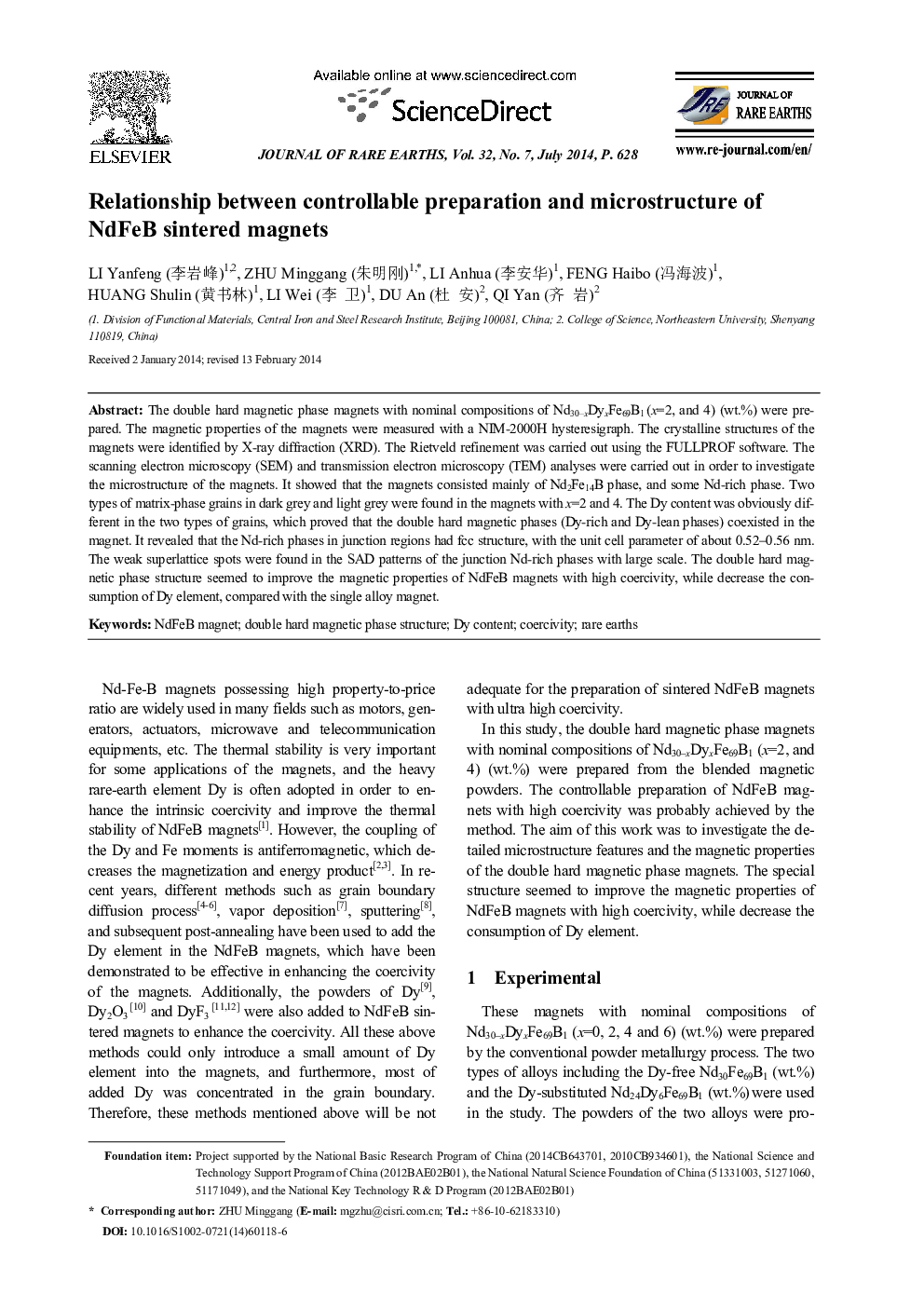| کد مقاله | کد نشریه | سال انتشار | مقاله انگلیسی | نسخه تمام متن |
|---|---|---|---|---|
| 1260913 | 971765 | 2014 | 5 صفحه PDF | دانلود رایگان |

The double hard magnetic phase magnets with nominal compositions of Nd30–xDyxFe69B1(x=2, and 4) (wt.%) were prepared. The magnetic properties of the magnets were measured with a NIM-2000H hysteresigraph. The crystalline structures of the magnets were identified by X-ray diffraction (XRD). The Rietveld refinement was carried out using the FULLPROF software. The scanning electron microscopy (SEM) and transmission electron microscopy (TEM) analyses were carried out in order to investigate the microstructure of the magnets. It showed that the magnets consisted mainly of Nd2Fe14B phase, and some Nd-rich phase. Two types of matrix-phase grains in dark grey and light grey were found in the magnets with x=2 and 4. The Dy content was obviously different in the two types of grains, which proved that the double hard magnetic phases (Dy-rich and Dy-lean phases) coexisted in the magnet. It revealed that the Nd-rich phases in junction regions had fcc structure, with the unit cell parameter of about 0.52–0.56 nm. The weak superlattice spots were found in the SAD patterns of the junction Nd-rich phases with large scale. The double hard magnetic phase structure seemed to improve the magnetic properties of NdFeB magnets with high coercivity, while decrease the consumption of Dy element, compared with the single alloy magnet.
Graphical AbstractThe Dy-rich matrix phase and Dy-lean matrix phase coexist in the magnets, which is regarded as the main cause for the improvement of the remanence and coercivity (a) x=0; (b) x=2; (c) x=4; (d) x=6Figure optionsDownload as PowerPoint slide
Journal: Journal of Rare Earths - Volume 32, Issue 7, July 2014, Pages 628–632